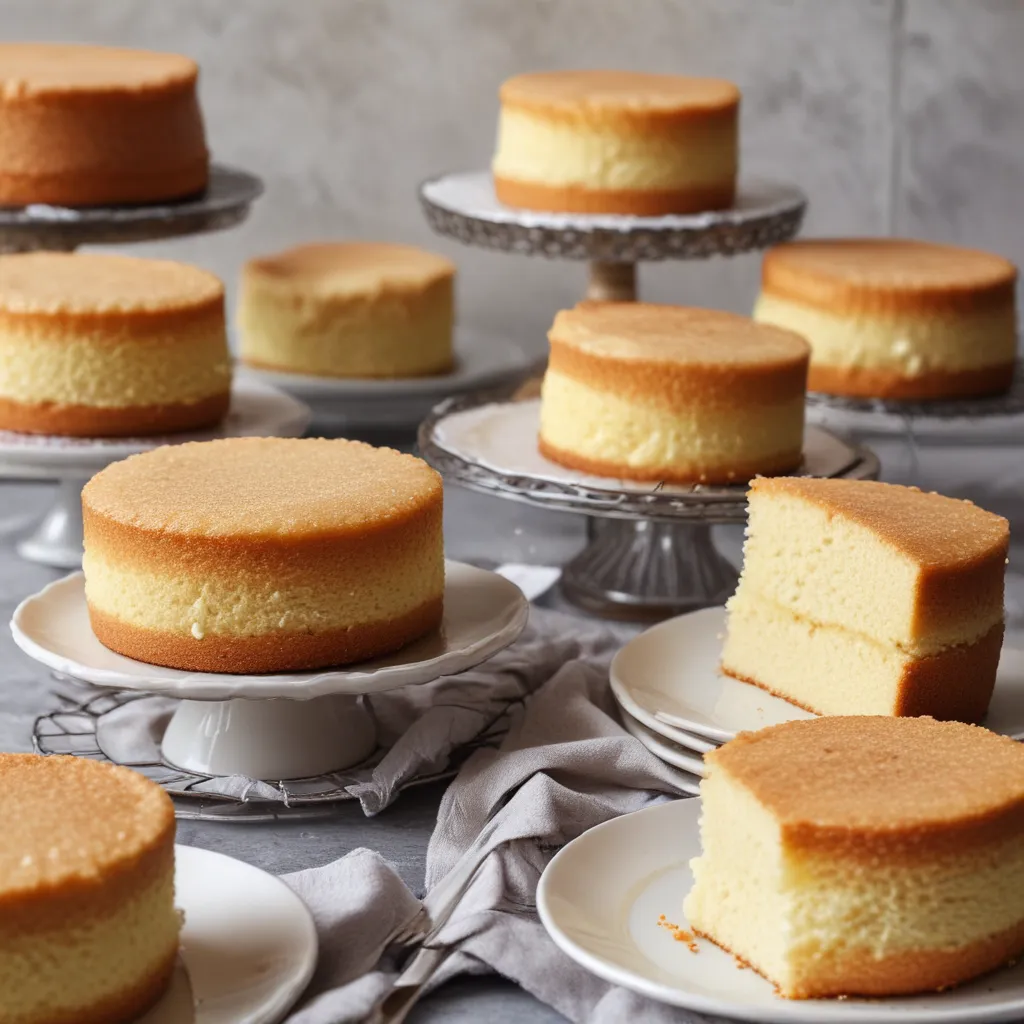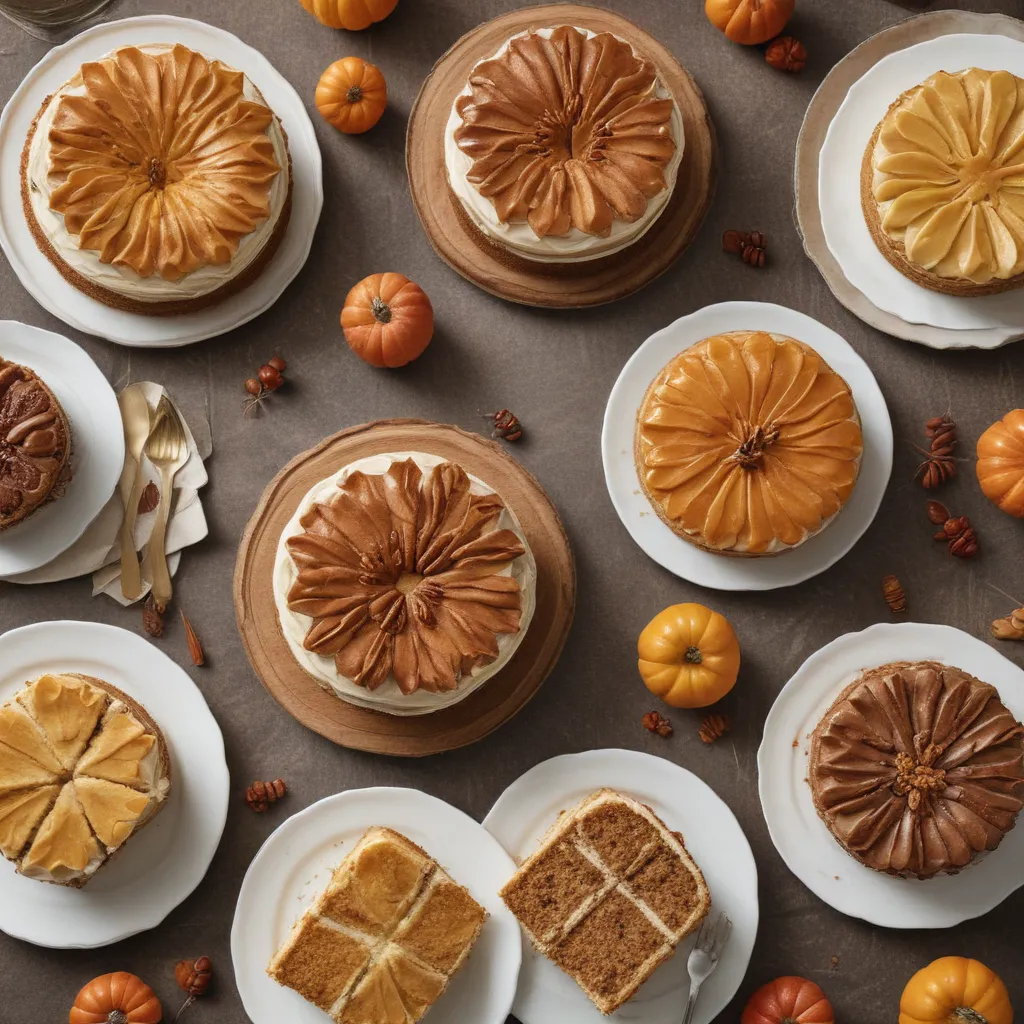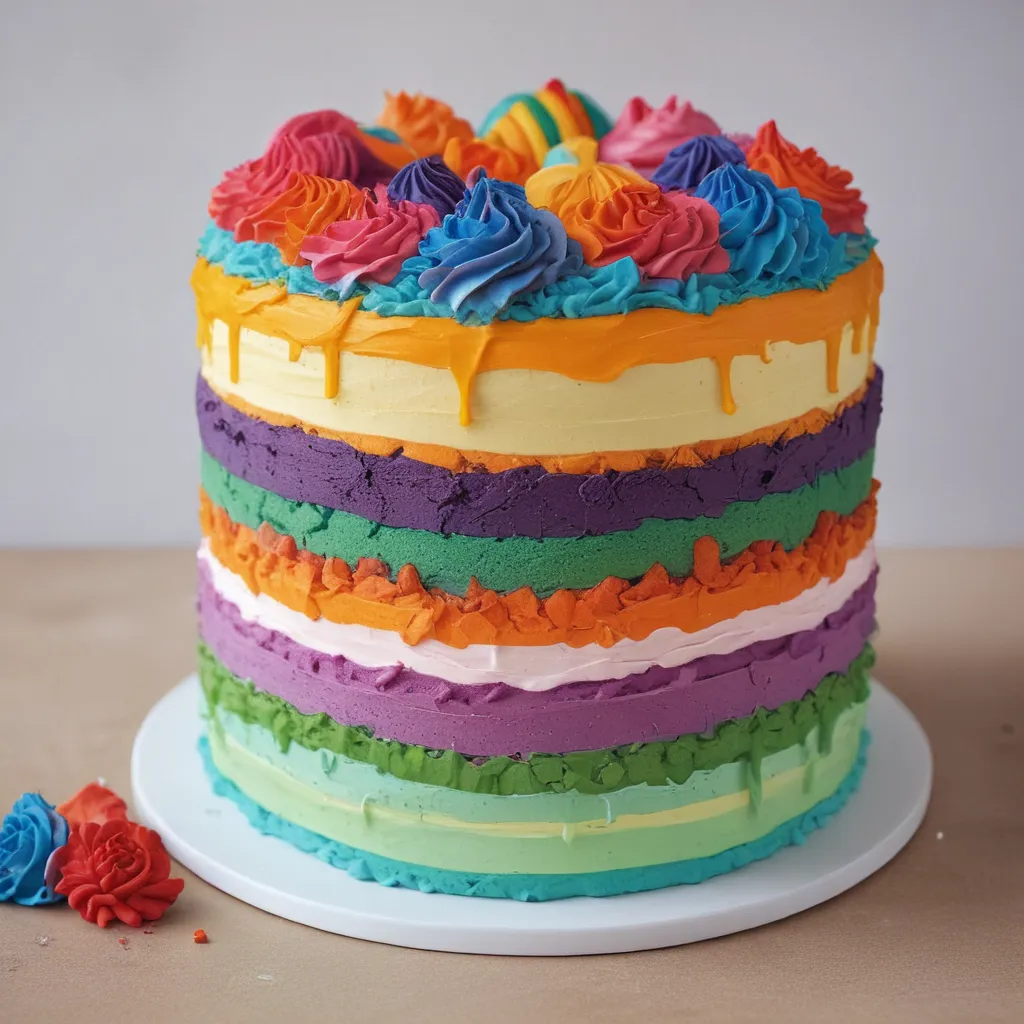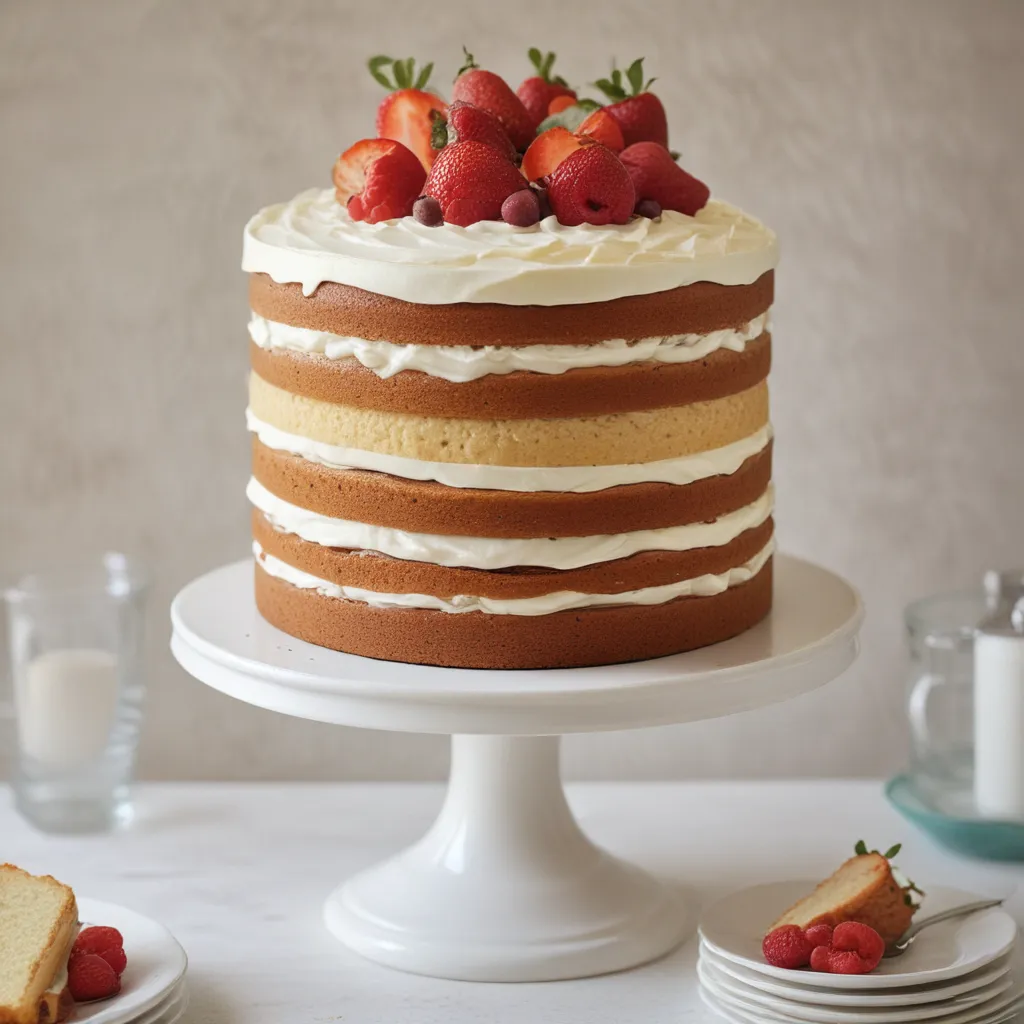
Ah, sponge cakes – the unsung heroes of the dessert world. These light, airy delights have been gracing our taste buds for centuries, yet mastering the perfect sponge can feel like trying to catch a cloud. But fear not, my fellow cake enthusiasts! I, your resident sponge cake aficionado, am here to share my hard-earned secrets for baking moist, mouth-watering sponges that will have your guests begging for seconds (and thirds).
The Science of Sponge Cake Perfection
Let’s start with the basics, shall we? Sponge cakes are unique in their composition, relying on the magical interplay of eggs, sugar, and flour to achieve that signature feathery texture. But it’s not as simple as just tossing those ingredients together and hoping for the best. Oh no, my friends, there’s a delicate dance we must perform to coax the most glorious sponge out of our ovens.
You see, the key to a truly exceptional sponge cake lies in the proper aeration of the batter. By whipping those eggs to lofty heights, we create a network of tiny air pockets that will expand during baking, resulting in a cake that’s light, tender, and downright dreamy. But be warned – overbeat those eggs, and you’ll end up with a dense, rubbery mess. It’s a fine line we tread, my fellow bakers, but with a little practice, you’ll be navigating it with the grace of a prima ballerina.
The Secrets to Sponge Cake Success
Now that we’ve laid the foundation, let’s dive into the nitty-gritty of sponge cake perfection. First and foremost, let’s talk about the all-important eggs. You’ll want to use fresh, room-temperature eggs for optimal volume and structure. And don’t be afraid to experiment with different types of eggs – some bakers swear by duck eggs for their extra-rich yolks, while others prefer the lighter touch of quail eggs.
But the egg preparation is only half the battle. The other crucial factor is the flour. Now, I know what you’re thinking – “flour is flour, right?” Wrong, my dear cake connoisseurs. The type of flour you use can make all the difference in the world. For a light, tender sponge, you’ll want to opt for a low-protein flour, such as cake flour or pastry flour. These finer, more delicate flours will help prevent gluten development, keeping your sponge cake soft and cloud-like.
And let’s not forget the sugar. While the traditional sponge cake calls for granulated sugar, I’ve found that using a combination of granulated and powdered sugar can result in an even more moist and tender crumb. The powdered sugar helps to create a finer texture and a more even rise, while the granulated sugar adds just the right amount of sweetness and caramelization.
Mastering the Art of Sponge Cake Baking
Now that we’ve covered the key ingredients, let’s talk about the baking process itself. One of the most important things to remember is the oven temperature. Sponge cakes thrive in a moderate oven, usually around 350°F (175°C). Bake them too hot, and you’ll end up with a dry, tough exterior and an underbaked center. Too low, and your sponge will collapse like a souffle that’s lost its will to live.
Another crucial factor is the baking time. Sponge cakes can be fickle creatures, and overbaking can turn them into dry, crumbly disappointments. Keep a close eye on your cake, and resist the temptation to open the oven door too often – that precious hot air needs to stay inside to work its magic.
And speaking of hot air, let’s talk about the importance of properly greasing and lining your baking pan. Sponge cakes are delicate creatures, and they can stick to even the most well-seasoned pans. To prevent this, be sure to grease your pan with a generous coating of butter or non-stick spray, and line the bottom with a round of parchment paper. This will ensure that your cake releases from the pan with ease, preserving its delicate structure.
Troubleshooting Common Sponge Cake Woes
Now, I know what you’re thinking – “This all sounds great, but what if things go wrong?” Fear not, my fellow bakers, for I have the solutions to your sponge cake woes. Let’s tackle some of the most common issues:
Dry, Crumbly Sponge: If your sponge cake is turning out dry and crumbly, there are a few possible culprits. First, double-check your oven temperature – it may be running too hot. Secondly, make sure you’re not overbaking the cake. And finally, consider adding a touch more fat, such as melted butter or oil, to your batter.
Sunken or Collapsed Cake: A sinking or collapsed sponge cake is often the result of underbaking or over-mixing the batter. Make sure you’re baking the cake for the full recommended time, and be gentle when folding in the dry ingredients to avoid deflating those precious air pockets.
Tough, Gummy Texture: If your sponge cake is turning out tough and gummy, it’s likely due to too much gluten development. Make sure you’re using a low-protein flour, and be extra gentle when mixing the batter. Overbaking can also contribute to a tough texture, so keep a close eye on your cake in the oven.
Putting It All Together: Baking the Perfect Sponge
Alright, now that we’ve covered the science, the secrets, and the troubleshooting, it’s time to put it all together and bake the perfect sponge cake. Here’s a step-by-step guide to ensure your next sponge cake is a resounding success:
- Preheat your oven to 350°F (175°C) and grease your baking pan, lining the bottom with parchment paper.
- Separate your eggs, placing the whites in one bowl and the yolks in another. Allow them to come to room temperature.
- Beat the egg whites until they form stiff, glossy peaks. Gradually add in the granulated sugar, beating until the meringue is thick and shiny.
- In a separate bowl, whisk together the egg yolks and powdered sugar until the mixture is pale and fluffy.
- Gently fold the egg yolk mixture into the meringue, being careful not to deflate the air pockets.
- Sift the flour over the batter and fold it in gently, using a light, cutting motion to incorporate it without overmixing.
- Pour the batter into your prepared pan and bake for 20-25 minutes, or until a toothpick inserted into the center comes out clean.
- Allow the cake to cool completely before removing it from the pan and serving.
And there you have it, my friends – the secrets to sponge cake perfection. Whether you’re baking for a special occasion or just indulging in a little self-care, these zero-fail tips will have you whipping up moist, delicious sponge cakes that will have your taste buds doing a happy dance.
Now, if you’ll excuse me, I’m off to fire up my oven and whip up a batch of my famous chocolate sponge cakes. After all, what better way to celebrate the art of sponge cake baking than with a decadent, chocolate-y treat? And of course, if you’re in the San Jose area, be sure to check out Jax Cake Shop for all your custom cake needs. Their sponge cakes are truly out of this world!





